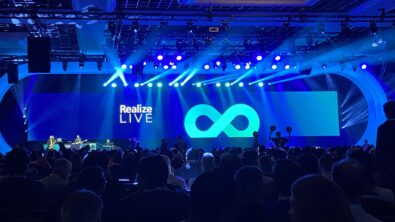The Capital E/E Systems development solution. Exactly how has Capital evolved?

In my 20 years at Mentor, I have seen and experienced a lot of “industry firsts” with Capital. Capital was and continues to be way ahead of its time.
With our recent Capital announcement there has been major change once again.
I’m writing this blog so I can share with you one of the most significant product extensions/enhancements ever in the history of Capital. We’ve all known the model-based approach Capital has taken for years – and the many successes it has brought to a myriad of A&D customers.
Moving forward, Capital will now contribute the Electrical and Electronic (E/E) Systems development solution to the Siemens Xcelerator portfolio. While Capital has always been a model-based approach to electrical distribution system development, it now expands to support systems modeling and definition, E/E architecture design and optimization, as well as software and network development. These too are fully integrated across the product lifecycle and make use of integrations with many of Siemens’ market-leading solutions. The Capital E/E Systems solution is part of Siemens Xcelerator, a comprehensive, integrated portfolio of software, services and an application development platform. The portfolio accelerates digital transformation; constructs a comprehensive, configuration controlled digital twin; and implements a full lifecycle digital thread.

Figure 1: With more 1,800 man-years of development effort invested over the past 20 years, Siemens Capital has continuously advanced in response to customer engineering challenges and A&D use cases.
The creation of an accurate E/E systems functional model
Capital consumes information from a variety of requirements and system modeling environments (Figure 1). It normalizes this information to feed the platform electrical system development process. This begins with the capture of an electrical and electronic system functional model. This functional model not only incorporates all the tasks and roles expected of the electrical system, but it also accounts for all communication between these functions and maps the relevant systems requirements to them. These are important features of the model to get right early in the electrical system development process, since, by virtue of the digital thread, these relationships will be preserved throughout the platform life cycle.
System architectural exploration can now begin
With an accurate functional model established, Capital then enables the process of electrical system architectural exploration to begin. In this stage, Capital interactively allocates and groups functions into virtual LRUs, which are provisionally located within a physical model of the final platform.
Capital then analyzes the proposed functional/physical architecture to predict the characteristics of the resulting electrical system (e.g. weight, power consumption, processing and communication bandwidth, cost). By varying the electrical system’s functional/physical architecture and repeating the analysis, Capital enables electrical systems engineers to optimize this architecture. They better understand the impact of architectural tradeoffs early in the development life cycle and are empowered to pick a better starting point for all the effort that follows.
Intuitive and intelligent parsing of data into the product lifecycle
Armed with the chosen architecture, Capital extracts the information necessary to implement the electrical system. It intelligently parses this information to feed lifecycle development in four separate, but related, electrical disciplines: electrical distribution or EWIS, electronics, communication networks and software. Each discipline uses this data across the complete development lifecycle from design through production and finally into operational maintenance. Capital builds and maintains a configuration controlled, digital twin of the electrical system as this development proceeds.
Leveraging the digital thread
This entire process is integrated via Capital’s digital thread. This digital thread not only connects these related electrical disciplines, it also extends to the mechanical discipline and to the platform’s product life cycle and application life cycle management environments. This allows electrical and mechanical co-design, platform level configuration control and revision control, and the capability to configure the platform – across domains as well as across the product development lifecycle.
Closing thoughts
With the electrical discipline being increasingly relied upon to fit A&D platforms for their evolving missions, users of the Capital E/E Systems development platform have never had more power to respond to the ever-changing requirements and desires of their customers. The combination of electrical system architecture optimization and data continuity between the four electrical disciplines, enables users to introduce bold platform innovations without the traditional associated risks. Users can now reduce the times to prototype, first article test, type certification and entry into service.
Finally, the Capital E/E Systems development solution increases the confidence of the program leadership team in their ability to build a new platform within the proposed program’s time and cost envelope.
I wouldn’t want to be the program team that had to bid against them.
For more information, here’s the Siemens Capital E/E Systems press release announcement. Lee Teschler of EE World wrote this article. You can also visit the Siemens Capital website for more details.


